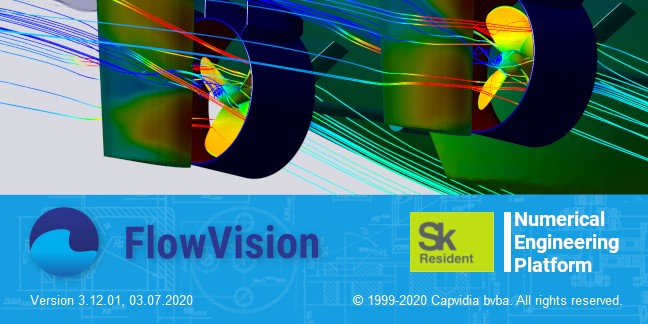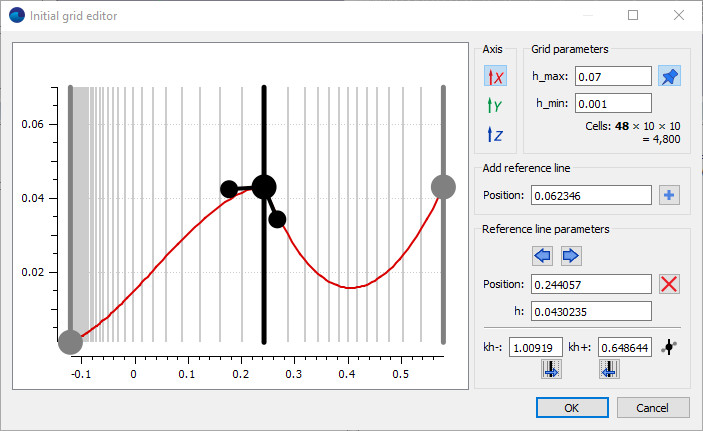3rd July 2020 FlowVision 3.12.01 was released. It is a short view of the new version of FlowVision.
New models
- The coal model allows you to simulate three stages of coal particle combustion: water output (drying), pyrolysis (release of volatile gases and their combustion), and combustion of coke residue.
- Simulation of icing of aircraft`s surface by crystallization model.
- A new radiation model, Discrete-ordinates method, allows simulating radiation with taking spectra and shadows into account.
- The program's interface includes now the new type of dispersed phases, Carcass, which is used to simulate porous media.
- The Darcy model for stable and quick simulating of flow's motion through porous medium (Carcass) with high hydraulic resistance.
- Simulating of multiply - sized groups of dispersed particles. Prepared sets of size groups can be tuned in Size spectra; this allows the program to simulate motion of particles of different-sized particles in one Phase of the Particles type.
- New power law PL2 for simulating non-Newtonian liquids.
New possibilities of preprocessing
- New Initial grid editor with convenient graphical user interface, which allows you to tune sizes of cells of the initial grid.
- New settings Method = Replace in cropped volume, Method = Add in cropped volume, and Method = Average in cropped volume for Initial conditions and Modifiers. This new feature allows taking into account the difference between the volume of the computational grid and the volume of the geometry object, in which the modifier or initial conditions are activated.
- Support of FSI computations done by CSE method with Abaqus 2020.
New possibilities of postprocessing
- Exporting results of the computation into the VTK format for ParaView or other software for scientific data visualization.
- Displaying streamlines on a plane.
- Export of loading from Supergroups into a glo file.
Other changes
- "Very visous flow" option in "Advanced options" of solver tab allow to simulate flows with extremely low Re number (like in tasks of rubber extrusion or molding).
- Heat source now acts on the dispersed Phase too.
- Particles can now be simulated with sliding surfaces and conjugated boundary conditions.
- The FvLicenseUtil utility is now also available in Windows. This utility allows you, from a command line, to examine a license status, register a license or obtain information for generating a license.
- In API of the Numerical engineering platform a new type of user modules was developed, Boundary condition. Now the user can create their own implementations of boundary conditions in order to simplify specifying complicated boundary conditions. Examples in the SDK folder include the library for generating waves on water surface (it can be used, for example, to simulate motion of a ship in sea waves).
Useful links
- Vide-tutorial about new initial grid editor: https://youtu.be/eaMvKCccmpA
- FlowVision quick start video Part 1: https://youtu.be/f0g95Y9raJk
- FlowVision quick start video Part 2: https://youtu.be/qjs92toa6hI


